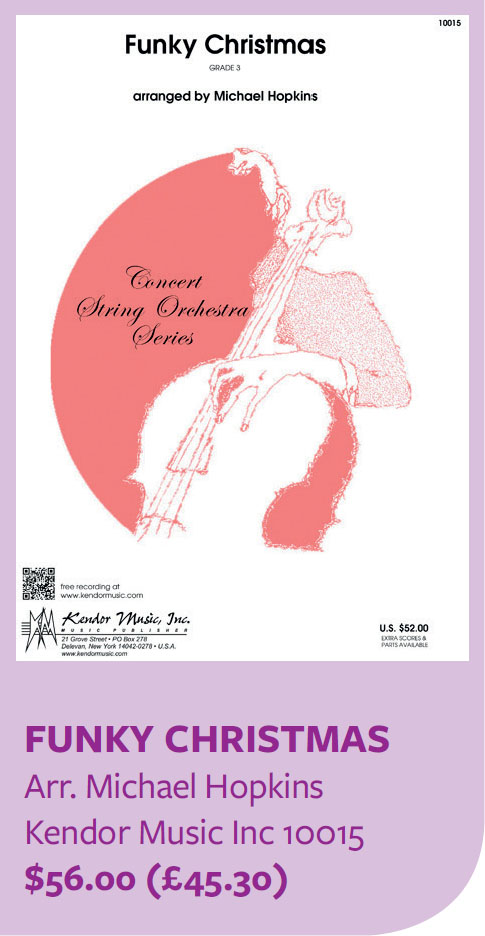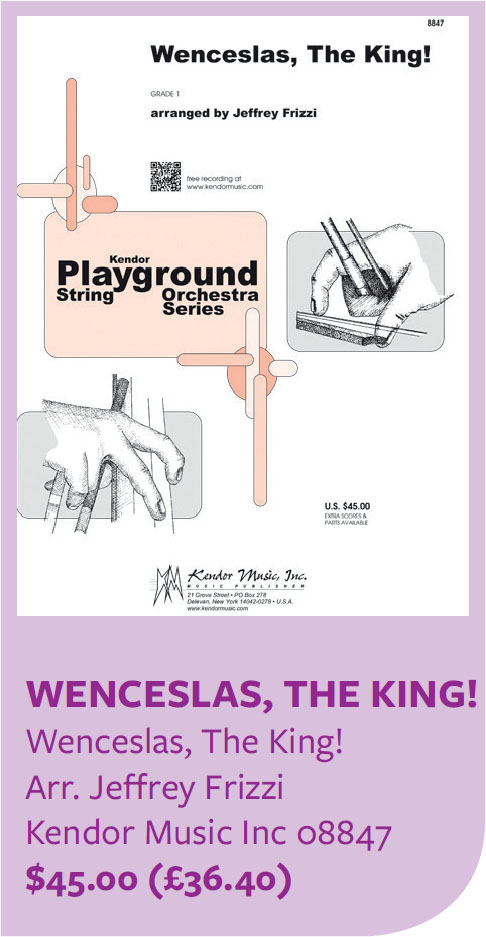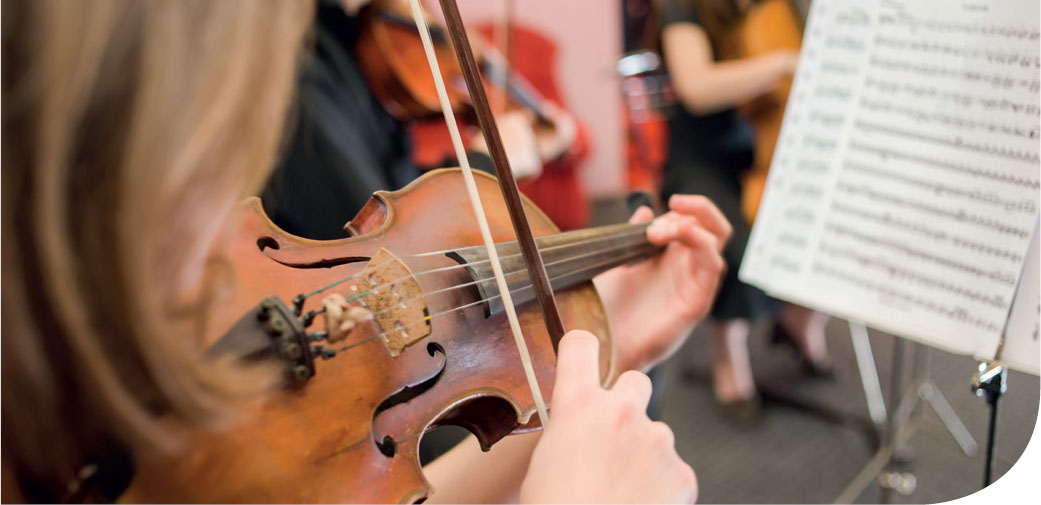
Funky Christmas
The arranger describes this as ‘a funky mashup’ of various well-known Christmas tunes including ‘Jingle Bells’,’ Deck the Halls’, ‘Jolly Old St. Nicholas’ and ‘Hark! The Herald Angels Sing’. This is billed as a publication for school orchestras, but it could be used by string quartets providing music for Christmas functions or performances.

This is a fun and well thought out groovy compilation, which has been condensed into an ideal 5 minutes – perfect for performance! The optional percussion (sleigh bells and claves) and drum parts add a lot to this arrangement.
Although this is billed as being for Grade 3 level, this American indication may not correlate directly to the expectations for Grade 3 level students in the UK. In fact, it may be more appropriate for students working at Grade 4-5 level. There is a great deal of rhythmic complexity, which makes the piece great fun to play. The players would need to have a good level of rhythmic ability and a reasonable amount of preparation time in order to deliver an effective performance. The first violin part goes up to high D on the E string!
There is a full recording available for free on the publisher's website (kendormusic.com), which would help students to understand how the piece works aurally and can be referred to throughout the learning process. This is a piece which would be very appealing for younger teenagers, or advanced younger students, who have a good reading capability.
The parts are clearly printed, with page turns well thought out. 3rd violin parts are provided as an option for the viola, while the double bass part is almost identical to the cello's. This means this would be quite presentable in an ensemble without double basses. There are some cool and funky bass lines for the lower string players to enjoy. Lots of copies of parts are provided, and more are available upon request.
The arranger gives some useful technical directions as to how certain bow strokes should be played. He also mentions some relevant YouTube tutorials to help with the ‘chop’ bow stroke, which is a fun feature for the upper string players. There are also some hand claps, adding another element to the texture.
An energetic and rhythmic piece, with lots of challenges for all players to enjoy!

Wenceslas, the King!
This is a simple and straightforward arrangement for an approximately grade 1 level string orchestra. It is based around elements from the ‘Good King Wenceslas’, however, it puts a modern-day twist on this centuries old classic.
The opening features cellos and double basses that create a repetitive hand drum rhythm on the open D and A strings, which the arranger notes were typical of folk music of the late Middle Ages and Renaissance periods. The double stops should be fun for young cellists to explore as a technique. Over this the violins and violas (or optional violin 3s) enter, introducing some of the melodic ideas. After an introductory section, the main theme of the carol appears in the first violins. Technical guidance is given, suggesting the use of the 4th finger on the high E in the first violin part, in order to keep a more consistent sound through the melody.
Elements of the thematic material are then passed to the cellos and violas, while the violins take over the hand drum rhythm, which features in different places throughout. In the middle section, while the cellos and double basses take more of the thematic material, the violins and violas use pizzicato for their accompanying parts. It is nice to see some of the melodic material being given to the double basses in the final section, albeit doubling with the first violins, meaning this could still work even in an ensemble without bass players.
The scores are clearly printed, with lots of copies for each part being provided. Useful additions include the 3rd violin parts, which present an optional doubling of both the viola and piano parts – a useful performance option for elementary ensembles.
A recording of this is available for free download on the publisher's website (kendormusic.com), with the duration being 3’20.
The arranger also writes a friendly and informative brief introduction to the story of Good King Wenceslas on the opening page, which will be of interest to any children working on this piece and provides a historical context.
This is a well-presented addition to the Christmas season repertoire for junior string players!









